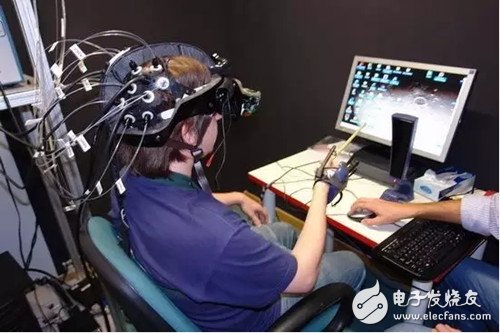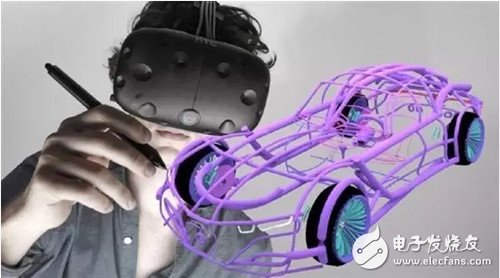What is the development trend of China's virtual reality welcoming a new round of booming technology?
At present, countries have proposed the top-level design of virtual reality development planning from the perspective of government. The US government's National Network and Information Technology R&D Program has proposed eight R&D priorities in its fiscal year 2016 budget, and plans to invest about $4.1 billion in research and development in the coming year, including those involved in virtual reality. The budget for machine interaction and information management accounts for 20% of the annual budget and ranks second among the eight sectors. The EU has listed 37 projects in the field of information and communication technology in the “Horizon 2020†program with a funding of 80 billion euros, and there are 4 directly involved in intelligent human-computer interaction. As early as 2007, the Japanese government released the roadmap for innovation and technology to the 2025 science and technology development roadmap, including technologies such as virtual reality.
In China, virtual reality has been highly valued and supported by the Ministry of Industry and Information Technology, the Ministry of Science and Technology and other ministries, and has achieved stage results. In addition, BAT, Huawei, ZTE, Haier, Hisense, Keda Xunfei, Lenovo, etc. have all formulated relevant plans. At the same time, a large number of projects such as Novo, Huajie Aime, Shengwei Te, Lexiang Technology, and Birds have emerged. Focus on VR's entrepreneurial company.

First, the three major development areas of virtual reality technology areas - display, chip, interactive tracking.
In the new display field, high-resolution display and flexible display represented by technologies such as AMOLED and light field display have become the development trend of VR/AR. Compared with the traditional LCD display, the high-performance AMOLED display has the characteristics of fast response, low weight, low power consumption, anti-blue light, and obvious cost reduction. In addition, high-performance AMOLED displays improved portability while reducing dizziness, energy consumption, cost, and health risks. Since the flexible AMOLED has practical significance in terms of VR head weight reduction and portability, it is expected to become an advanced development route in the future.
In the chip field, high-performance GPUs and 5G have become the development trend of VR computing processing and wireless communication. Because VR has high requirements for real-time modeling and rendering capabilities in high-definition scenes, high-performance GPUs are the core embodiment of computing power in virtual reality. At present, international manufacturers such as NVIDIA, AMD, imaginaTIon, Qualcomm and ARM all have layouts in the virtual reality field, and frequently send SDKs to improve the performance of GPUs in VR. For wireless transmission, high-resolution, full-view display brings high immersion of virtual reality, and brings great challenges to data transmission. At present, virtual reality devices mainly transmit data through wired mode. With the advent of 5G, performance bottlenecks such as ultra-high resolution, full-view, 3D, and low latency required for VR content are expected to be solved to a large extent.
In the field of tracking interaction, sensor fusion and three-digit registration modeling have become the trend. Multi-sensor information fusion is actually a functional simulation of the complex problem of human brain synthesis. Compared with single sensors, the use of multi-sensor information fusion technology to solve problems such as detection, tracking and target recognition, enhance the reliability and accuracy of data collection, and expand the spatial coverage of data collection is the development focus of data acquisition technology. At present, Intel's Realsense, Microsoft's Hololens, and Google's Project Tango are based on a series of cameras, sensors and chips that can be used to model the environment around the user in real time, thus adding human-like perceptions of space and motion to VR devices. .
Second, what impact does virtual reality have on industrial structure, industry integration and application services?
(1) Boosting industrial changes. The virtual reality industry has a wide range of radiation and strong driving. From the perspective of the structure of the cloud-pipe end of the ICT industry, the influence of VR is not limited to the end equipment field, considering the factors such as ultra high definition, low delay and 360 degree panorama. With the higher requirements of network transmission, virtual reality will provide development momentum for the tube equipment and even the cloud equipment market. This also explains the motivation of network equipment giants such as Cisco to acquire VR vendors in recent years. In addition, from the perspective of ICT industry support, virtual reality will accelerate the upgrade process of upstream key component industries. For example, in the display field, VR has accelerated the replacement speed of OLEDs in traditional small and medium-sized markets for traditional LCD screens. In the chip field, the high-end GPU market for VR continues to grow rapidly. Studies have shown that since the advent of the mainframe, a new terminal form has emerged every ten years, with the result that the number of users or devices has increased by an order of magnitude, with intelligence, Internet and social economy, and people's lives. The combination of the increasingly tight, virtual reality is expected to set off a new wave of industrial development after the smart phone.

(2) Promoting integration and innovation. Virtual reality is an emerging field in which multiple industries are intertwined. Several trillion-scale industries such as electronics, communications, and culture are brought together to shape a new development model. According to the decision-making arrangements of the State Council, China needs to enter the ranks of innovative countries and lead innovation and development. It needs to lead from the passive follow-up to the future innovation. At present, China has achieved certain results in the fields of high-end chips, new displays, artificial intelligence, and 5G communications. Through the combination of innovations in these fields, virtual reality is the industry, and it can promote cross-border integration in different fields. Define new products and technologies, and even subvert new markets and standards. For example, to improve the VR experience, the system delay should be less than 20 milliseconds, and achieving this standard innovation requires deep integration of sensing acquisition, GPU rendering, data transmission, near-eye display, and software algorithms.
(3) Prospering the service market. The virtual reality business is rich in form, with great industrial potential and strong social benefits. Currently, it is mainly used in video games, live events, video entertainment, healthcare, real estate, retail, education, engineering and military industries, and is accelerating penetration into the realm of life and production. For the mass market, the experiential consumption era provides space for the development of theme parks and retail shopping featuring virtual reality. For example, Disney and Universal Studios have used it for theme parks, and Ali has launched “Buy†shopping based on VR technology. service. For industrial applications, virtual reality comprehensively enhances industrial collaborative design and intelligent manufacturing capabilities. BMW plans to use VR equipment in its future car design. In addition, Kazakhstan steel mill workers have significantly improved output efficiency after trials of VR equipment.
Third, how can we develop virtual reality technology? First, break through key technologies.
The first is to break through key technologies. Focus on high-performance OLED, fusion display, sensor fusion, GPU, 5G, artificial intelligence and other key areas to accelerate technological breakthroughs. Accelerate the process of localization of key components, develop safe and reliable software and hardware solutions, and propose to organize the dominant units of optical, electronics, computer science and other disciplines, and jointly research institutions in the fields of medicine, psychology, and cognitive science to virtualize The suitability of real equipment is the entry point, and a number of independent intellectual property rights technologies and products with international leading level are innovated.
The second is to strengthen policy support. Give full play to the positive role of the government in promoting industrial development, combine the focus of industrial development, and increase support for basic research and transformation of results such as technological innovation, business model innovation and service innovation, and gradually build a support for VR entrepreneurship and integration of production, education and research. The policy and regulation system establishes a close-to-share results sharing mechanism between government, industry, academia and research, and promotes the exchange and cooperation and sharing of common key technologies such as new display, sensor fusion, sensory computing, wireless communication, and tracking interaction, and continuously optimizes the industrial development environment.
The third is to establish a sound standard and test verification system. Docking related standards at home and abroad, considering the visual characteristics and physiological safety of the human eye, establishing and perfecting the field of virtual reality, covering key technical standards such as sensing, communication, chip, display and interaction. Play the role of the city's technology benchmark, explore the test and verification methods of VR products, accelerate the application and demonstration of relevant key technologies through the development and testing of prototype products and systems, promote the establishment and improvement of relevant laws and regulations, and promote the industrial development of VR. . The fourth is to strengthen safety supervision. In the aspect of photobiosafety, we carry out professional safety testing and evaluation actively and orderly, such as eye infrared radiation hazard and retinal heat hazard. In addition, while providing users with a real virtual reality social experience, it provides reasonable supervision of harassment and cyber violence.
Semi-transparent Liquid Crystal Display
Semi-Transparent Liquid Crystal Display,2.7Inch Translucent Liquid Crystal Display,Thin Translucent Liquid Crystal Lcd Display,Fast Response Lcd Display
Dongguan Yijia Optoelectronics Co., Ltd. , https://www.everbestlcdlcms.com